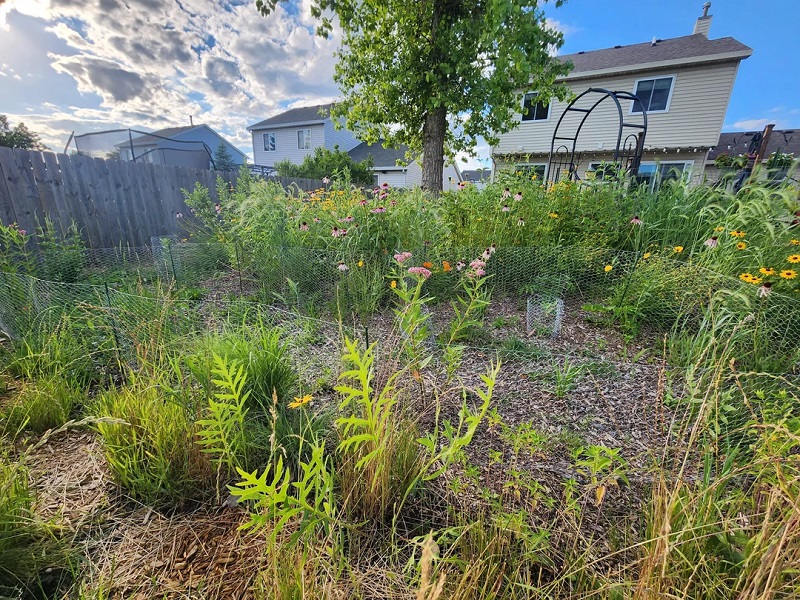Any progress is good progress — especially when it's this pretty.
A Redditor shared a photo of their beautiful prairie progress to r/NativePlantGardening.

"Still have some bald spots I'm working on, but my prairie is coming in nicely," the user wrote.
Located in Wisconsin, this Redditor's native plant garden is blooming with colorful flowers and tall grasses. The "bald patches" of the garden are due to hungry rabbits, the poster explained in the comments.
Monoculture lawns are a lot of work — watering, mowing, fertilizing, and other maintenance can take up tons of your time and money. The Plant Native estimated that "lawns can take 2,400% more time than a native garden."
Native plant lawns, however, require little maintenance once established. The difference will be clear — especially in your water bill. Reduced watering cost is one of the biggest impacts of switching to a native lawn. According to Lawn Love, "a lawn made up of drought-tolerant grass can save as much as 25% on water use, and converting to native plants can save up to 60%."
The change doesn't have to be drastic. Even a handful of native wildflower seeds throughout the yard or a simple switch to a clover lawn can make a big difference for you and the environment.
Native gardens support pollinators such as bees and butterflies, promote biodiversity, provide habitats for local wildlife, and reduce air, water, and noise pollution. These lawns are all pros, no cons.
Unhappy with your yard? Make smart, sustainable changes to your yard with our guide to switching to a natural lawn. While you're at it, check out the National Wildlife Federation's native plant finder to see what plants will thrive in your yard.
"Beautiful," a commenter wrote, "and [I] love the compass plants. I have a bunch and feel like they're underutilized in native plantings."
"I like what I see," another user said.
Join our free newsletter for easy tips to save more and waste less, and don't miss this cool list of easy ways to help yourself while helping the planet.









